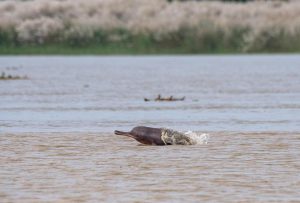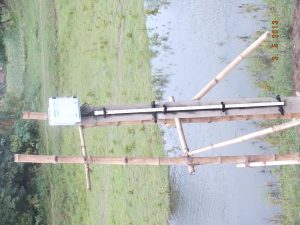Fisheries on the Upper Yangtze are on the brink of collapse, and intensive hydropower development is the main cause, according to a recent report.
In June 2013 the Ministry of Agriculture’s Yangtze River Fishery Resources Management Committee office and WWF organised a scientific study of the Upper Yangtze. The scientists focused on the Tongtian, Jinsha and Chishui rivers – and the results were disturbing.
According to Zhao Yimin, director of the committee office, the “destruction and loss of habitats have left fish populations on the Jinsha at the brink of extinction. There is an urgent need to regularise hydropower approval and management processes, restore key habitats and populations, and at key locations take emergency measures to protect biodiversity.”
Long-term monitoring by various research bodies, including the Chinese Academy of Sciences’ Institute of Hydrobiology, has found that populations of the four types of fish most commonly farmed domestically in China have dropped sharply. In the 1950s these fish might produce over 30 billion fry annually, compared to less than 1 billion today.
More than 140 species of fish have been found in the Jinsha. But in the three samples taken on this occasion, only 17 were present – three of which were not native. These newcomers were larger and more numerous than the native species.
The survey team found that vegetation alongside the Wudongde and Baihetan dams has been almost completely destroyed. These two dams and the Xiluodu and Xiangjiaba dams will turn the lower Jinsha into four head-to-tail reservoirs, with rapids transformed into still water. Fish that need the rapids to survive will be trapped and at risk of disappearing.
Twenty five large or medium-sized dams are either already built, under construction, or planned on the Jinsha. Four large dams planned for completion in 2020 will be the equivalent of two of the existing Three Gorges Dam. Although in 2005 the government ordered a halt to projects that had gone ahead without approval, the hydropower companies paid only minimal fines (for example, 200,000 yuan for Xiluodu) and approvals were soon forthcoming, allowing construction to start again. When the dams are complete a cascade of reservoirs, one every 100km or so, will be formed, which will put huge pressure on biodiversity.
Although some dams have built downstream facilities where rare and native fish will be bred and released, this is of very limited benefit: the numbers are too low and the practice does nothing about the destruction of habitats.
The environmental impact assessments for these projects fail to take into account the overlapping effects of multiple dams. Dams are evaluated in isolation, meaning the medium and long-term risks to the entire regional ecosystem are underestimated. The survey team therefore suggest an urgent overall assessment of cascade dam development, in order to allow systematic conservation measures to be decided upon.
Yuan Chaoyue is an intern at chinadialogue’s Beijing office





